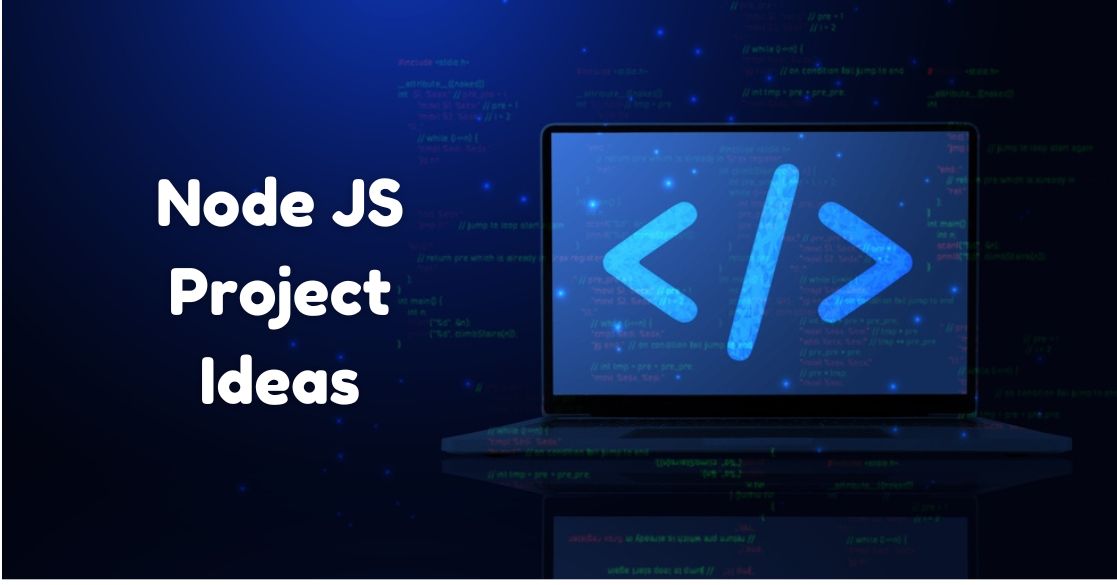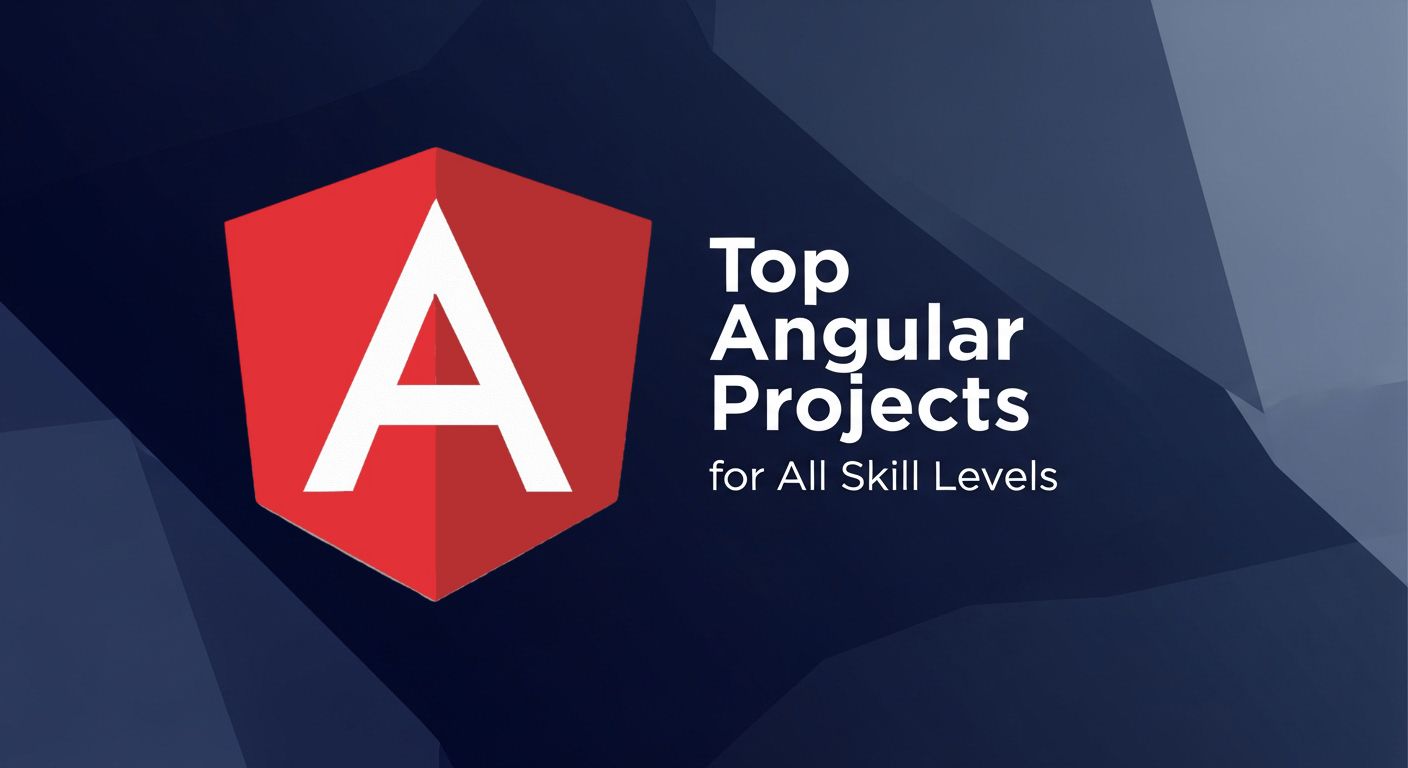- Project 1: AI-Powered Chatbot with Node.js
- Project 2: Real-Time Collaboration Tool with Node.js
- Project 3: Blockchain-Based Payment Gateway with Node.js
- Project 4: IoT-Based Home Automation System with Node.js
- Project 5: Secure Authentication System with JWT and OAuth
- Project 6: E-Commerce API with GraphQL
- Project 7: AI-Based Code Review Tool
Node.js has cemented its place as one of the most powerful backend technologies, fueling everything from microservices to real-time applications.
But what’s next?
As developers continue to push the limits, new projects are emerging that redefine efficiency, scalability, and performance.
Whether you’re an aspiring developer or a seasoned pro, this list of top 7 Node.js projects will introduce you to tools and frameworks that are setting new standards in web development.
Full Stack Development Course By UT Austin
Become a full stack developer with UT Austin's 28-week program. Learn full stack development with React, Node, SQL & MongoDB.
Project 1: AI-Powered Chatbot with Node.js
Overview
In 2025, AI-driven chatbots are more intelligent and widely used than ever before. This project focuses on building an AI-powered chatbot using the OpenAI API and Node.js, enabling seamless real-time communication.
By integrating natural language processing (NLP), this chatbot can provide human-like responses, making it ideal for customer support, virtual assistants, and interactive applications.
Tech Stack
- Node.js – Backend runtime environment for handling API requests.
- Express.js – Lightweight framework for routing and API handling.
- OpenAI API – AI-powered language model for generating intelligent responses.
- WebSockets (Socket.io) – Enables real-time, bidirectional communication.
- HTML, JavaScript – Basic frontend to interact with the chatbot.
Key Features
- Real-time Chat – Instant communication with AI responses.
- NLP-Based Responses – Uses OpenAI’s GPT model to generate human-like replies.
- Multi-User Support – Handles multiple conversations simultaneously using WebSockets.
- Customizable AI Behavior – Fine-tune responses by tweaking OpenAI API parameters.
- Scalability – Can be deployed on cloud platforms like Heroku, AWS, or Vercel.
How It Works?
- The user sends a message through the chatbot interface.
- The Node.js backend receives the message and forwards it to OpenAI’s API.
- The AI model generates a response and sends it back to the Node.js server.
- The server delivers the AI-generated reply to the user in real time using WebSockets.
- The chatbot continuously listens for new messages and responds dynamically.
GitHub Code for this Project: ai-chatbot-node repository
What Will You Learn?
By building this project, you will gain hands-on experience with:
- Integrating OpenAI API – Learn how to connect and send user queries to an AI model.
- Real-Time WebSockets Communication – Understand how Socket.io enables real-time messaging.
- Building a Scalable Node.js Server – Learn to handle multiple users and concurrent chat sessions.
- Creating an Interactive AI Chatbot UI – Implement a simple frontend for user interaction.
- Deploying an AI Chatbot – Discover how to host your chatbot on cloud platforms.
Use Cases & Applications
- Customer Support Automation – Provide instant AI-powered responses to common queries.
- Virtual AI Assistants – Build chat-based AI assistants for personal or business use.
- E-learning Chatbots – Help students with automated Q&A and study support.
- Healthcare Chatbots – Assist patients with basic medical queries and appointment scheduling.
This AI-powered chatbot serves as a strong foundation for exploring conversational AI and can be further enhanced with voice recognition, multilingual support, and chatbot memory.
Suggested Read: How to Use ChatGPT API?
Project 2: Real-Time Collaboration Tool with Node.js
Overview
In today’s digital workspace, real-time collaboration is crucial for enhancing productivity and teamwork.
This project focuses on building a real-time collaboration tool using Node.js, WebSockets, and Firebase, allowing multiple users to edit documents, chat, and share updates instantly. This is similar to tools like Google Docs or Notion, where multiple users can work together without conflicts.
By leveraging Socket.io for real-time updates and Firebase for persistent storage, this project ensures seamless collaboration with minimal latency.
Tech Stack
- Node.js – Backend runtime for managing real-time updates.
- Express.js – API framework to handle collaboration requests.
- WebSockets (Socket.io) – Enables real-time, bidirectional data sync.
- Firebase Firestore – Stores document changes and syncs across users.
- React.js (Optional) – For building an interactive frontend UI.
Key Features
- Real-time Document Editing – Multiple users can edit the same document simultaneously.
- Live Cursor & User Presence – Show users’ edits and online status in real time.
- Instant Chat & Comments – Users can communicate via a built-in chat system.
- Cloud Storage (Firebase) – Ensures data persistence and backup.
- Role-Based Access Control – Define permissions (Viewer, Editor, Admin).
How It Works?
- The user opens a shared document – The Node.js server assigns a unique session.
- WebSockets sync changes – As users type, updates are instantly broadcasted.
- Firebase stores revisions – Changes are stored for persistence and conflict resolution.
- Live cursor & presence tracking – Users can see where others are editing in real time.
- Built-in chat & commenting system – Users can discuss changes within the document.
GitHub Code for this Project: realtime-collab-tool repository
What You Will Learn?
By completing this project, you will:
- Implement WebSockets for Real-Time Updates – Learn how to sync content instantly across users.
- Integrate Firebase Firestore for Data Storage – Store and retrieve collaborative data efficiently.
- Manage Multi-User Sessions – Handle concurrent edits without conflicts.
- Enhance UI with Live User Presence – Track active users and their edits.
- Improve Project Scalability – Deploy on cloud platforms like Heroku or Vercel.
Use Cases & Applications
- Team Collaboration Software – Ideal for remote teams working on shared documents.
- Live Code Editors – Build real-time collaborative coding platforms.
- Educational Platforms – Enable students and teachers to edit and share notes.
- Business Workflows – Facilitate team brainstorming and project documentation.
This Real-Time Collaboration Tool is a powerful foundation for building interactive and scalable collaboration software. You can expand this by adding user authentication, real-time commenting, or version history tracking.
Also Read: Node.js Interview Questions and Answers
Project 3: Blockchain-Based Payment Gateway with Node.js
Overview
With the rise of cryptocurrencies and decentralized finance (DeFi), blockchain-based payment gateways are gaining traction as a secure, transparent, and cost-effective alternative to traditional payment methods.
This project will guide you in building a blockchain-powered payment gateway using Node.js, Web3.js, and Ethereum (or any other blockchain network).
This system allows users to make transactions in cryptocurrency, verify payments on the blockchain, and ensure security through smart contracts.
Tech Stack
- Node.js – Backend server for handling transactions.
- Express.js – API framework to manage payment processing.
- Web3.js – Interact with Ethereum smart contracts.
- Solidity – For writing smart contracts.
- MetaMask – For handling crypto transactions in the browser.
- MongoDB / Firebase (Optional) – Store transaction records.
Key Features
- Cryptocurrency Payments – Accept payments in Ethereum, Bitcoin, or stablecoins.
- Smart Contract-Based Transactions – Automate payments and reduce fraud.
- Blockchain Verification – Transactions are recorded on the blockchain.
- MetaMask Integration – Users can connect their crypto wallets.
- Real-Time Payment Status – Fetch and display live transaction updates.
How It Works?
- The user initiates a payment – The system generates a unique wallet address for the transaction.
- Payment is processed via MetaMask – The user sends cryptocurrency to the smart contract.
- Blockchain verifies the transaction – Using Web3.js, the system listens for confirmation.
- Transaction status is updated – The backend stores the payment details and marks it as completed.
- Order is processed – The system executes business logic once payment is confirmed.
GitHub Code for this Project: blockchain-payment-gateway repository
What You Will Learn?
By completing this project, you will:
- Develop Smart Contracts – Create secure, self-executing blockchain transactions.
- Integrate Web3.js with Node.js – Fetch transaction details and interact with Ethereum.
- Use MetaMask for Crypto Payments – Enable secure wallet-based payments.
- Deploy a Blockchain Payment System – Accept cryptocurrency payments on real applications.
- Enhance Security & Transparency – Ensure fraud-proof payments using blockchain.
Use Cases & Applications
- E-Commerce Payments – Accept crypto payments for online stores.
- Subscription Services – Automate recurring payments using smart contracts.
- P2P Money Transfers – Build a decentralized payment app.
- NFT Marketplace – Enable users to buy/sell NFTs securely.
- Gaming & Betting Platforms – Handle microtransactions via blockchain.
This Blockchain-Based Payment Gateway can be expanded further with multi-currency support, fraud detection, and DeFi integrations.
Project 4: IoT-Based Home Automation System with Node.js
Overview
Home automation is becoming increasingly popular, allowing users to control home appliances remotely via a web or mobile application.
This project will guide you in building an IoT-powered home automation system using Node.js, Raspberry Pi (or ESP8266), and MQTT for real-time device control.
With this system, you can control lights, fans, air conditioning, security cameras, and more using a Node.js backend and a user-friendly web interface.
Tech Stack
- Node.js & Express.js – Backend server to manage IoT devices.
- MQTT (Message Queuing Telemetry Transport) – Lightweight communication protocol for IoT.
- Raspberry Pi / ESP8266 – Microcontroller for controlling appliances.
- Socket.io – Real-time communication between server and UI.
- React.js / HTML + JavaScript – Frontend for the control panel.
Key Features
- Remote Control of Home Devices – Turn ON/OFF appliances using a web app.
- Real-Time Device Status Updates – Monitor appliance status live.
- Voice Control (Optional) – Integrate with Google Assistant/Alexa.
- Scheduling & Automation – Set timers for automatic control.
- Secure Authentication – Ensure only authorized users control devices.
How It Works?
- The user interacts with a web or mobile app to control a device.
- Node.js server processes the request and sends a command via MQTT.
- Raspberry Pi / ESP8266 receives the command and triggers a relay to turn the appliance ON/OFF.
- MQTT sends a status update back to the server, reflecting changes on the UI.
GitHub Code for this Project: iot-home-automation repository
What You Will Learn?
By completing this project, you will:
- Use MQTT for IoT communication – Build a real-time messaging system for devices.
- Integrate Node.js with hardware – Control Raspberry Pi / ESP8266 using API calls.
- Develop an IoT dashboard – Create a web-based control panel.
- Use WebSockets for real-time updates – Get instant device status changes.
- Enhance security – Implement authentication for controlling devices.
Use Cases & Applications
- Smart Homes – Control lights, fans, and appliances remotely.
- Energy Management – Reduce electricity consumption by automating devices.
- Security Systems – Integrate with motion sensors and cameras.
- Agriculture Automation – Automate irrigation systems.
- Smart Offices – Manage air conditioning, lights, and security from a dashboard.
This IoT-Based Home Automation System can be expanded further with voice commands (Google Assistant/Alexa), mobile app control, and AI-based automation rules.
Project 5: Secure Authentication System with JWT and OAuth
Overview
Security is a crucial aspect of any web application. This project will help you build a secure authentication system using JWT (JSON Web Token) for session-based authentication and OAuth 2.0 for third-party login options like Google and GitHub.
With this system, users can:
- Sign up and log in securely using email & password (JWT-based).
- Authenticate via third-party providers (Google, GitHub, etc.).
- Access protected routes only if logged in.
- Implement token refresh mechanisms for session security.
Tech Stack
- Node.js & Express.js – Backend server for authentication.
- MongoDB & Mongoose – Database for storing user credentials.
- bcrypt.js – Secure password hashing.
- jsonwebtoken (JWT) – Token-based authentication.
- passport.js & OAuth 2.0 – Social login integration (Google, GitHub, etc.).
Key Features
JWT-based authentication – Secure login/logout with token-based sessions.
OAuth 2.0 integration – Enable login with Google, GitHub, etc.
Secure password hashing – Encrypt user passwords before storing them.
Protected routes – Restrict access to authenticated users.
Refresh token mechanism – Ensure session security without re-authentication.
How It Works?
- User registers by providing email and password.
- Passwords are hashed using bcrypt before storing in the database.
- On login, the user receives a JWT token, which must be sent in every request.
- OAuth 2.0 flow enables login via Google/GitHub without passwords.
- Users can access protected routes only if they provide a valid JWT.
GitHub Code for this Project: secure-auth-system repository
What You Will Learn?
- How to implement JWT-based authentication in Node.js.
- How to integrate OAuth 2.0 (Google, GitHub) into your authentication system.
- How to securely hash passwords with bcrypt.
- How to create protected routes with middleware.
- How to build a full authentication system from scratch.
Use Cases & Applications
- Secure Web Applications – Protect user accounts with JWT.
- API Authentication – Secure REST APIs for client-server apps.
- Third-Party Logins – Provide easy login via Google/GitHub.
- E-commerce & SaaS Apps – Implement secure user management.
- Enterprise Security – Use token-based authentication for microservices.
Project 6: E-Commerce API with GraphQL
Overview
Building an E-Commerce API using GraphQL allows for flexible data fetching, reducing over-fetching and under-fetching issues common with REST APIs. This project will implement an E-Commerce backend where users can browse products, manage their cart, and process orders efficiently.
Tech Stack
- Node.js & Express.js – Backend server.
- GraphQL & Apollo Server – API with flexible queries and mutations.
- MongoDB & Mongoose – Database for storing products, users, and orders.
- JWT Authentication – Secure user authentication.
- Stripe API (optional) – Payment processing integration.
Key Features
- GraphQL API – Optimized querying for e-commerce data.
- User Authentication – Secure login and signup with JWT.
- Product Management – Fetch, add, update, and delete products.
- Shopping Cart – Add/remove products, view total price.
- Order Processing – Place and manage orders.
- Stripe Integration (optional) – Secure online payments.
How It Works?
- Users sign up/login to access the platform.
- GraphQL queries fetch products dynamically with selected fields.
- Authenticated users can add/remove items from their cart.
- Orders are processed after checkout (integrating Stripe if needed).
- Admins manage products through mutations (add/update/delete).
GitHub Code for this Project: ecommerce-api-graphql repository
What You Will Learn?
- How to build an E-Commerce API with GraphQL.
- How to set up Apollo Server with Express.js.
- How to create flexible GraphQL queries and mutations.
- How to authenticate users with JWT in GraphQL.
- How to integrate Stripe for payment processing (optional).
Use Cases & Applications
- E-Commerce Platforms – Online stores with a flexible API.
- Product Management Systems – Easy CRUD operations on products.
- Inventory & Order Management – Streamlined checkout and purchase flow.
- Multi-Vendor Marketplaces – Extend API to support multiple sellers.
Project 7: AI-Based Code Review Tool
Overview
This project involves building an AI-powered code review tool using Node.js and OpenAI's GPT API. The tool will analyze source code for errors, performance issues, security vulnerabilities, and best practices, making it a valuable addition to software development workflows.
Tech Stack
- Node.js & Express.js – Backend API server.
- OpenAI API – AI-powered code analysis and suggestions.
- MongoDB & Mongoose – Database to store review history.
- React.js (optional) – Frontend for a user-friendly UI.
- JWT Authentication – Secure user authentication.
- WebSockets (optional) – Real-time review updates.
Key Features
- AI-Powered Code Review – Detects syntax errors, security flaws, and inefficiencies.
- Code Quality Suggestions – Provides AI-based recommendations for improvements.
- Multi-Language Support – Reviews JavaScript, Python, and more.
- Secure User Authentication – Users must log in to submit code.
- Code History & Reports – Stores past reviews for comparison.
- Real-Time Suggestions (Optional) – Uses WebSockets for instant feedback.
How It Works?
- Users submit source code through the API or frontend UI.
- The AI model analyzes the code using OpenAI API (or any ML model).
- AI detects issues like security vulnerabilities, inefficiencies, and best practices.
- A structured report is generated with improvement suggestions.
- Users can view the report and implement recommendations.
GitHub Code for this Project: ai-code-review-tool repository
What You Will Learn?
- How to integrate OpenAI API with Node.js.
- How to build a secure API with JWT authentication.
- How to store and retrieve review history using MongoDB.
- How to analyze and improve code using AI-powered insights.
Use Cases & Applications
- Code Quality Assurance – Helps developers write better code.
- Automated Security Audits – Detects vulnerabilities before deployment.
- Developer Productivity – Speeds up the review process with AI insights.
- Learning Tool – Assists beginner programmers with real-time feedback.
Elevate your Node.js skills and career with the UT Austin Full Stack Developer Program.
This 28-week online course offers hands-on projects, expert mentorship, and real-world experience building scalable cloud applications.
Enhance your full-stack expertise to meet industry demands and unlock rewarding tech opportunities.






